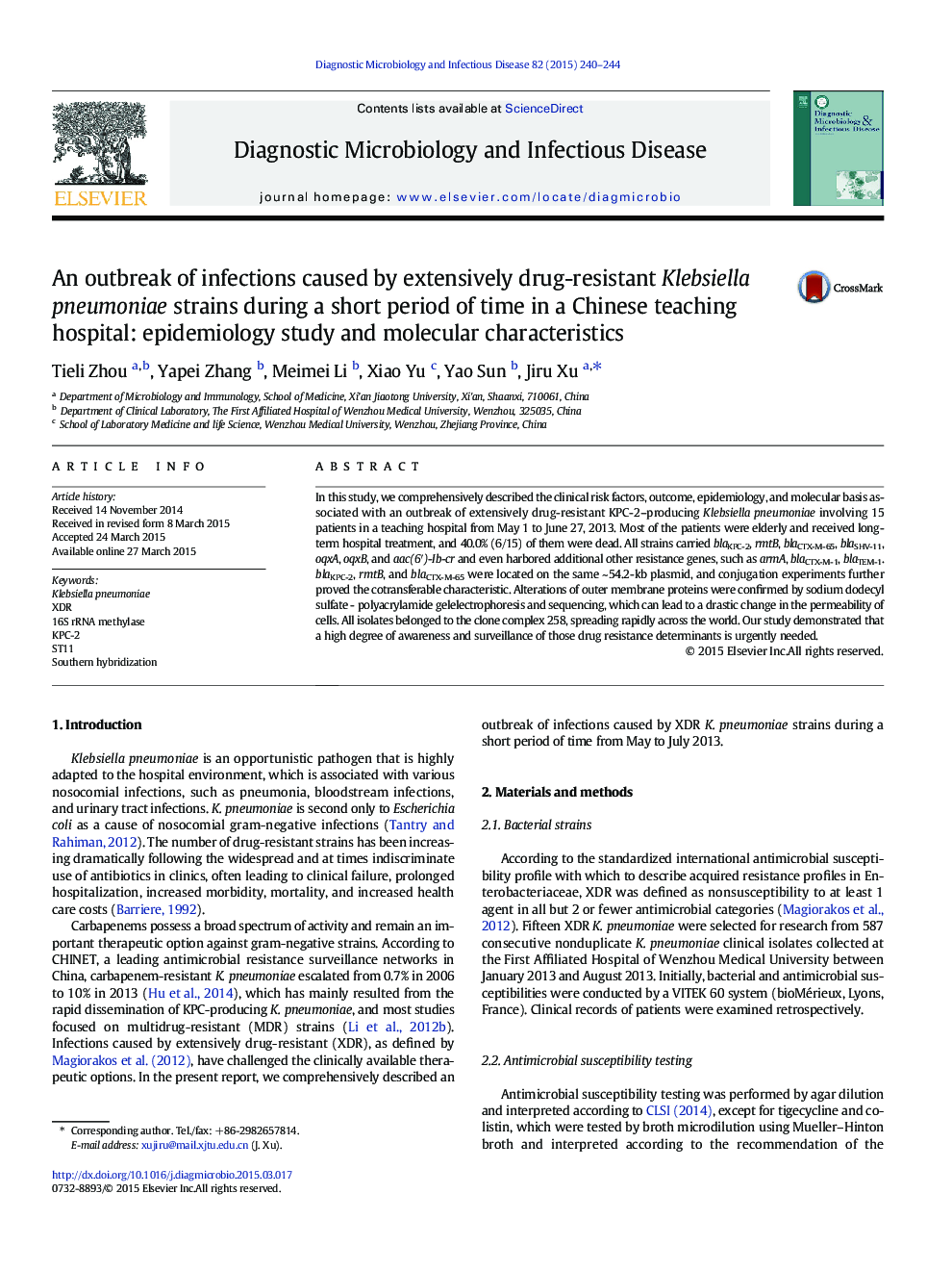| Article ID | Journal | Published Year | Pages | File Type |
|---|---|---|---|---|
| 3346873 | Diagnostic Microbiology and Infectious Disease | 2015 | 5 Pages |
•Fifteen isolates displayed resistance to almost all categories clinically.•Each strain carried at least 3 different kinds of resistance determinants.•blaKPC-2, rmtB, and blaCTX-M-65 were located on a ~54.2-kb transferable plasmid.•Alterations of outer membrane proteins were confirmed by SDS-PAGE and sequencing.•All isolates belonged to the clone complex 258, spreading rapidly across the world.
In this study, we comprehensively described the clinical risk factors, outcome, epidemiology, and molecular basis associated with an outbreak of extensively drug-resistant KPC-2–producing Klebsiella pneumoniae involving 15 patients in a teaching hospital from May 1 to June 27, 2013. Most of the patients were elderly and received long-term hospital treatment, and 40.0% (6/15) of them were dead. All strains carried blaKPC-2, rmtB, blaCTX-M-65, blaSHV-11, oqxA, oqxB, and aac(6′)-Ib-cr and even harbored additional other resistance genes, such as armA, blaCTX-M-1, blaTEM-1. blaKPC-2, rmtB, and blaCTX-M-65 were located on the same ~54.2-kb plasmid, and conjugation experiments further proved the cotransferable characteristic. Alterations of outer membrane proteins were confirmed by sodium dodecyl sulfate - polyacrylamide gelelectrophoresis and sequencing, which can lead to a drastic change in the permeability of cells. All isolates belonged to the clone complex 258, spreading rapidly across the world. Our study demonstrated that a high degree of awareness and surveillance of those drug resistance determinants is urgently needed.
